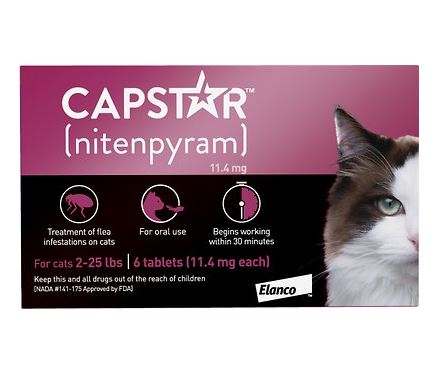How to Get Rid of Cat Fleas in the House: A 7-Step Guide
Last Updated on
How do you get rid of cat fleas in the house?
Eradicating cat fleas from your home can be a huge frustration. Just when you think you have it under control you’ll see one of the small, agile parasites jump into view. At times, it can feel like even the most thorough clean of your home isn’t enough.
But eradicating cat fleas from your home is possible.
If you use the right methods, it will be a considerably easier task. Use the steps in this guide to eliminate fleas from your home quickly and efficiently.
7 Steps to Eradicating Fleas
- Prepare your home for cleaning
- Wash all bedding
- Use a high-powered vacuum
- Use a flea spray
- Repeat
- Ensure your pet has been treated for fleas
- Don’t forget to de-flea the garden
Fleas are a multilayered issue consisting of adults, eggs and larvae. The fleas that you actually see are estimated to account for only around 5% of the total flea infestation, the rest of the infestation is hidden throughout your home in carpets, furniture and bedding. This is often why people struggle to completely eradicate fleas from their home.
By tackling the issue with our seven steps, you will be able to deal with the problem once and for all.
Why Are There Fleas in My House?
You may be dealing with fleas within your home even if you don’t have a pet. This often occurs when people move into a house where cats or dogs have previously lived. A flea infestation can occur many months after the initial exposure, as flea eggs can lay dormant for several months before hatching. This could be why your pet-free home is suddenly overrun with fleas. If you do have a pet, use this guide by Tuxedo Cat to ensure you treat the problem as a whole.
It is very important to treat your pet as well as your home to handle the problem in its entirety. Treating your pet but not your home, or vice versa, may temporarily reduce the number of fleas seen but won’t fully deal with the issue which is why re-infestation occurs.
Step 1: Prepare Your Home for Cleaning
Before you begin, remove any pets from the home so you can give the whole place a thorough clean without your pet walking around picking up or dropping fleas and eggs from their fur. Then, pick up all loose items such as toys off the floor ready to wash them. If possible, move the furniture around so that you can access as much of the floor as possible while you are cleaning. If you are unable to move the furniture, be prepared to vacuum as underneath the furniture and in corners and hard to reach places.
Step 2: Wash All Bedding
To begin dealing with fleas, first pick up all of the soft furnishings such as bedding and cushions around your home and put them into the washing machine. Bedding and similar items are often overlooked when it comes to trying to eradicate fleas, but in reality, the fleas love to nest in these areas (and on your pet’s toys) meaning they are hot spots for eggs and larvae so by washing them you can be sure there are no fleas on them.
Often a regular hot wash is enough to get rid of any fleas that are on the material, but putting the bedding in the dryer can help you be sure the items are clean and flea-free. According to Flea Science, all life stages of a flea should die when washing laundry with hot water. However, if you have a big flea problem that you are struggling to get under control, you may want to consider throwing out the old bedding altogether and getting new items. If your pet has toys that cannot be washed, these may need to be thrown out too.
Step 3: Use a High-Powered Vacuum
Now that the soft furnishings are in the washing machine and out of the way, it is time to handle the rest of your home. Use the vacuum on the floors, furniture and mattresses. It is best to be thorough and get into all of the cracks and tight spaces where fleas can hide and live. Remember that fleas thrive in dark places, so don’t skip these hard to reach spaces.
After you have vacuumed your home, empty the vacuum bag immediately to avoid the fleas escaping and eggs hatching (vacuuming removes the fleas and eggs but does not kill them). It is best to vacuum every other day while you are trying to get the flea infestation under control as this makes sure you pick up any of the eggs or larvae that may have been initially missed. If you are having a very hard time with ridding your home of fleas, sprinkle fine salt on your carpets and leave for one day before vacuuming as this can help by dehydrating the fleas.
Step 4: Use a Flea Spray
Many flea sprays can be sprayed both on your pet and around your home, they are designed to kill fleas, eggs and larvae on contact so can make a huge difference in getting control of the flea situation within your home. Depending on the flea spray you decide to use, it may be effective for anything from a few days to a few months after spraying.
This Virbac Knockout flea treatment spray has a 4.4 rating out of 5 on Chewy.com, and according to reviews, has helped to knock out serious flea infestations.

Once you have vacuumed, spray the flea spray across your home to kill any of the remaining fleas and eggs then when you next vacuum you will pick them up and thanks to the spray they wouldn’t have had the opportunity to lay more eggs. Even the most thorough vacuuming of your home can leave behind a handful of fleas and eggs so a spray puts a stop to the reproduction cycle. Sprays are usually effective against more than one type of parasite and you can buy natural sprays that are non-toxic which are perfect for use in households with pets or children.
Step 5: Repeat
Fleas are small in size and like to lay their eggs in the dark cracks and crevices of a home, so repeating the cleaning process after a few days is necessary. Although tedious, it is the best way to be sure the problem has been dealt with.
One of the common mistakes people make is not repeating the process as they feel the first clean was thorough enough to remove all of the fleas and eggs. Unfortunately, if you do not repeat the process, the small number of eggs that were missed may hatch and the infestation of fleas will occur all over again, meaning you will be back to square one and will be repeating the cleaning process anyway.
Step 6: Ensure Your Pet Has Been Treated
When you have worked so hard to treat your home, the last thing you want to do is bring your pet back in when they still potentially have fleas and eggs on them. Your untreated pet will start the flea infestation all over again by dropping eggs in all of the areas you just cleaned and in a couple of weeks, you will see fleas throughout your home again. The full development cycle of a flea can take between 14 and 140 days. There are many ways you can treat fleas on your pet including flea shampoo, sprays, spot on treatment, collars and more.

Once your pet has been treated and your home has been thoroughly cleaned you should have the problem well and truly under control.
Step 7: Don’t Forget to De-Flea the Garden
The final step you may need to take is to spray or hose down the garden. If you have a pet, it’s likely your pet has picked up fleas from shaded areas in your garden. There are flea sprays that are designed to be used outside which do the same as the indoor sprays we discussed earlier but often simply watering down the area is an effective way to stop the fleas.
That’s it!
Your home should now be completely flea-free thanks to these 7 simple steps. It is best to keep up the regular vacuuming for a week or two to avoid any remaining fleas continuing the life cycle. The flea spray acts as a preventative measure for re-infestations too so keep it on hand. There is no doubt that dealing with fleas is a challenge, but these steps will help you avoid the common frustrations that occur when trying to gain control of the situation.
About the Author:
Dan has a passion for all things cat and runs Tuxedo-Cat.co.uk, a site which aims to encourage people to consider adopting overlooked black and white cats. He lives in the UK and has one black and white cat and a beagle.








